Graham Leslie McCallum
The tree of happiness flowers and fruits most abundantly for the creative man
- About
- Aphorisms, Maxims and Ponderings
- Biography – Graham Leslie McCallum
- CALMING COLOURING – ANIMAL PATTERNS
- CALMING COLOURING – FLOWER PATTERNS
- CALMING COLOURING – NATURE PATTERNS
- CALMING COLOURING – PATTERNS
- Poetry – Graham Leslie McCallum
- Spiritual Maxims, Aphorisms and Ponderings
- The Artist’s Eye – On viewing the world
- 4000 Flower and Plant Motifs
- 4000 Animal Bird and Fish Motifs
- 5000 Flower and Plant Motifs
- Pattern Motifs
- 400 Chinese Motifs
- 4000 Alphabet and Letter Motifs
- 400 Japanese Motifs
- 400 Art Deco Motifs
- 400 Art Nouveau Motifs
West Street – Durban – A Pictorial History
West Street was named after Sir Martin West, Lieutenant Governor of Natal from 1845 to 1849. When Natal was annexed to the Cape of Good Hope in 1845, Martin West who was formerly the Civil Commissioner for Albany in the Eastern Cape and Resident Magistrate at Grahamstown, was appointed to this position. West Street became the principle thoroughfare to Durban, holding this position until the present time. Born in 1804 in England, Martin West died the same year he was withdrawn as Lt. Governor. West was educated at Balliol College, Oxford, before joining the British East India Company. He served in Bombay until ill-health forced him to retire to the Cape of Good Hope. Of interest – the leafy and verdant Durban suburb ‘Westville’ is named after Sir Martin West.
(above) A view of the sandy and bushy plane where the city of Durban developed from a few wattle and daub huts to the modern city of today. This watercolour was executed from the heights of the Berean Ridge. It was on this plane alongside the Bay of Natal that West Street was laid out.
The borough of Durban was proclaimed by the 15th of May 1854 by Lieutenant-Governor Pine.
(below) Sir Benjamin Chilley Campbell Pine.

(above) A hand-drawn view from Settler Agent John Moreland’s Office of West Street. The rough and thatched wattle and daub structures can be seen in this drawing. Narratives from the time mention the thick sand drifts and the bushy vegetation where West Street is today.
(below) Settler Agent – John Moreland.
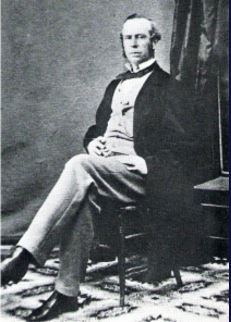
(above and below) Two engravings of upper West Street, Durban, looking west towards the ridge named ‘Berea’, 1855. The unhardened and wheel-rutted nature of the road is evident in this image. In the image above – more substantial structures are evident on the northern side of West Street, now roofed in tile, but the majority are one storey structures, of simple construction and thatched. From here the road inland led up the Berea to the hinterland and the capital Pietermaritzburg. The image below was drawn several years later than the engraving above, as you will notice many of the trees have grown larger.

(above) An illustrated image of the lower end of West Street with the beach dunes in the distance, 1857. It was important that a full span of draught-oxen and wagon could make a turn with ease. This proviso ensured that West Street was laid out as a broad tree-lined boulevard, that in modern times was converted into a 6 motor car lane, with parking, thoroughfare. It is evident in this image that most of the buildings have thatched roofs.
(above) A photograph of an ox-drawn wagon, with the Railway Shed and Durban Railway Station in the background. Where the man stands with arms akimbo, is the present corner of Gardiner and West streets, later the location of the Natal Bank. Note the rutted nature of the road surface.
(above) A photograph of the Dalton Saddlery with a solid two storey structure attached, West Street.
(above) A fascinating photograph of West Street in its earlier days. Brick and two storey structures are interspersed with simple thatched one storey buildings. Some of these buildings are residences while others are street-front businesses.
(above) The upper end of West Street. Note how the street undulates. Across some of these dips small streams emptied into the Bay to the left. These streams drained the ‘Western Vlei’, while in the east end, the ‘Eastern Vlei’ was drained by Milne’s Drain into Cato’s Creek. In rainy conditions these sections were muddy, smelly and difficult to traverse.
(above and below) A photograph of West Street looking west towards the Berea, photographed from the 1860’s. At this point the majority of the buildings are of brick, with many two storey structures. The smoke stack in the image serves as a handy reference point. You can see the same stack in the image below.

(image above and below) The somewhat tatty nature of early West Street is evident in these images. Ruts, sand drifts, animal dung and discarded debris give early Durban the look of a frontier town. It did not take long for the town councillors to establish a health board that oversaw these issues.

(image above and below) In these photographs one can see the raised sidewalk on the northern side of West Street, higher in certain sections, and accessed by stairs and sometimes by diagonally-placed wooden boards. Many images bare witness to the verges been used to offload and temporarily store merchandise such as barrels and boxes.

(image below) The premises of P. Henwood & Co.
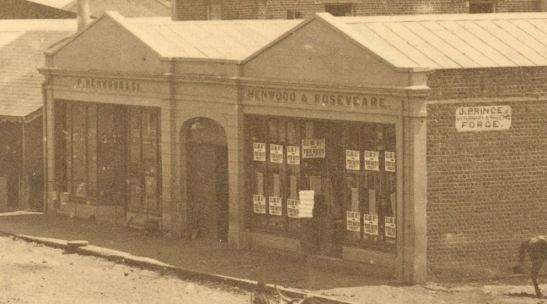
(above) A photograph of the middle section of West Street looking east towards the Indian Ocean. 1864. The tatty Town Gardens (Farewell Square) can be seen in the foreground. Where the circular lawn is in this image, a Bandstand was erected in later years, where military bands would entertain the citizenry. 
(above) West Street and Town Gardens photographed from the Town Hall tower, looking east towards the Band Stand and the Old Law Courts beyond. 
(above) A photograph of the Band Stand in the Town Gardens with the Town Hall and West Street in the background. The bandstand was demolished when the new City Hall was built in 1910. Not many of these structures have survived; however, a fine example has survived in the grounds of St. Dominic’s Academy in the frontier town of Newcastle, Natal.
(above) A photograph of West Street looking east, taken from the tower of the Town Hall. Note the boulevard nature of the street, with the first trees to be planted in Durban flanking the street. Note how the town gardens are now surrounded by a brick wall and railing.
(above) A photograph from the Town Hall tower of West Street. The open area in the foreground (a remnant of the old Market Square) is today Medwood Garden. Early Pioneer Farewell had his stockaded camp in this general area.
(above) A view down West street towards the west, from the intersection with Aliwal Street, with the Old Law Courts to the left. 1903. At this point in time, the electric tram line had been built.
(above) A photograph of southern side of West Street with shops fronting onto the street. Shopkeepers have erected awnings and verandahs to shield shoppers from inclement weather. Note the ghost figures of fast moving people and horses not fully captured by the old photographic processes of the time.
(above) An illustration (1874) of the far eastern end of West Street where the roads inclination climbs up the Berea ridge.
(above) A beautiful photograph of an western view of West Street. The Town Hall clock tower can be seen in the background with the Bath House and Main Police Station on the right. The road surface has been hardened.
(above) A photograph of the Town Hall and West Street during Queen Victoria’s Jubilee Celebrations.
(above) A view looking east of West Street. Note the raised walkways, stepped in some sections.
(above) Illustration of West Street with the Town Hall in the background, and a single-decker horse-drawn tram, 1889.
(above) Durban rapidly developed into a thriving business centre. Many of these businesses were located along West and Smith streets, catering for the needs of the colonial and indigenous. In the midground the Natal Drug Company can be located, providing medicines and preparations to Durbanites. These buildings did not stand for long before larger and taller structures were built to cope with the greater business demands. The Colonial Mutual Life Assurance Building was erected after the turn of the century where these building are located.
(above) A photograph of a busy West Street before the days of the electric trams. Note the horse-drawn trams and the rickshas plying their trade along this important street.
(above and 2 images below) These images are duplicated for clarity reasons. They are of the intersection with West and Field Streets. Note the three horse-drawn trams. They are of interest, for the Durban Artist and Chief Engineer of the Durban Harbour Works -Cathcart W. Methven copied this very image in his book ‘Sketches of Durban and its Harbour in 1891’, and not as one would assume in the ‘plein air’. (see the image below).


West Street with City Hall on the left and Post Office (Old Town Hall) to the right. 1920’s.
West Street, looking east, and the intersection with Field Street, with the Town Hall in the distance. Cowey, Son and Co, (Drapers and Outfitters) can be seen on the left. This business was owned by – William Cowey, William Richard Cowey & Clement Francis Davis.
(above) A remarkable photograph with so much visual interest. Note the business Ferguson & Co (Jewellers and Silversmiths) in the middle ground of the image and located on the corner of West and Field Street. Just beyond Ferguson’s on the opposite corner is the Tattersall’s Bar followed by the Caney’s Building (Jewellers and Photographers). Note the raised pavement to the northern side of West Street and the ramps.
(below) The image below records the same section of West Street and can be compared to the image above that was taken a few years later than this photograph.

(below) An illustration of Ferguson and Company, located on the Corner of West and Field Street.
(below) The Caney Buiding, West Street. This was the first 3 storey structure in Durban. Evidently, the family lived on the third floor, which was rickety and which swayed when the wind blew strong off the Bay. The third floor was demolished as a result. The structure to its left is the Tattersall Bar.
(below) Early photograph of West Street, looking East with St Joseph’s Roman Catholic Church on the right and the Town Hall in the far distance, Durban. Note the tram tracks. At this point in time the trams were pulled by horses and mules.


(above and below) A photograph recording the southern side of West Street, looking west towards St. Joseph’s Roman Catholic Church in the distance, and recorded before the tram lines were laid. The image (below) was photographed in 1895 after the horse-drawn trams began operating. A comparison reveals substantial upgrading of commercial buildings.

(above) A photograph looking east of West Street. On the right is the Methodist Church, followed by the Standard Bank and the Central Hotel. The Central Hotel was located at this location until the 1960’s.
(above) Ricksha Pullers transporting customers, goods and purchasers along West Street. 1890’s.
(above and below) Painted postcards of the old Town Hall and Public Baths, West Street.
(above) Photograph of West Street with the drug store Lennon Limited and the Stationery and Bookstore, Adams, on the left. The original business had its foundation in Port Elizabeth under B. G. Lennon. Today this business is owned by Aspen Pharmaceuticals, an international company run from Durban.
(above) A postcard of West street, post 1903. The old Town Hall and the Natal Bank is on the right. Note the Tramway Ticket Kiosk to the fore of the columned hall.
(above) Durban Police Station and Drill Hall, West Street, 1908.
(above and below) West Street. The Hardware Merchant ‘T. Alcock & Co.’ is located to the left. Beyond that is the London Chambers Building which burnt down in the early 1950’s
(below) the London Chamber Building, West Street, Durban.
(above) West Street, 1916. In the background is the Kenilworth Building to the left, and Natal Bank with its impressive tower to the right. In the foreground is the old Town Hall.
(above) A bird’s eye view of the intersection of Gardiner and West Street. On the left if the Kenilworth Building and on the right the Natal Bank. 1910’s.
(above) A Zulu ricksha puller with his client, West street, Durban with the old Town Hall in the background.
(above) West Street, post 1910. City Hall.
The northern side of the City Hall and West Street, Durban, 1920’s.
A view of the Durban City Hall, West Street, from the Waverley Hotel.
(above) The Waverley Hotel, West Street, with the City Hall in the background. 1911. Fortunately, this building has been partially preserved, for when the new building was built, the architects maintained the facade to the original building, minus the balconies.
(above) A birds-eye-view photograph of West Street taken from the Colonial Mutual Life Assurance Building, with the Waverley Hotel in the middle ground and the City Hall on the right. The Africa Bank tower is visible on the left. 1930’s.
(above and below) West Street and the City Hall on the left photographed from the Waverley Hotel, Durban, 1920.
(above) West Street and the Post Office photographed from the dome of the Durban City Hall. The attractive building in the centre is the Natal Bank.
(above) West Street, 1930’s.
(above and below) West Street in the 1950’s. Note how the Natal Bank in the middle of the image has lost its ornamental tower. The Post Office (old Town Hall) is on the right and the Kenilworth Building has been demolished and been replaced by a modern structure. In the image below the Natal Bank has been demolished and replaced. The destruction of these iconic buildings can only be regretted. The past 6 decades were characterised with precious little appreciation for the historical legacy bestowed on these generations. The commercial press to develop won-out in just about every case. It is now extraordinary to think that much of the commercial activity of Durban has left the old city centre, where trading space once was so competitive. The office building to the left has also disappeared to make way for an even larger high rise building. Many of these large commercial buildings stand unoccupied today. This primarily as a result of a decaying city centre, but also because business now prefers more relaxed and spaced-out premises. In the image below the Great War Memorial can be seen.
(above) An old and interesting photograph of a rustic intersection with West Street and Gardiner Street. The Methodist Church is on the left and the entrance to the Natal Bank on the right. 1860’s.
(above and 2 images below) Early views of West Street, 1870’s. If ever a monument should be erected to honour a species of animal in South Africa, than the ox should be that animal. For hundreds of years ox-power moved Southern Africa. In this image above 6 spans of oxen can be counted. 1860’s. At this point in time, several large trees still survived. These were invariably axed by the 1880’s.
(above) West Street, Durban.
(above) The intersection of Field and West Streets. 1870’s.
(above) The businesses of Koch and Co. and Harvey Greenacres, West Street, Durban 1880.
(above) A fascinating early photograph of an intersection of West Street, Durban, showing the London Restaurant and ox-drawn transport wagons. This image is interesting for its ghost images – the result of the slow exposure. At this early date, the street has not been hardened, but note its breadth allowing for a fully spanned ox wagon to turn. it is difficult to envision this scene with the modern street and its busy motorized traffic.
(above) A photographic view down West Street, Durban. The Methodist Church is on the left. 1880’s.
(above) A bird’s eye view of West Street taken from the old Town Hall tower. The Africa Bank is below, while the Methodist Church can be located on the right and the Standard Bank to its right. 1880’s.
(above) A westerly view of West Street. St. Josephs Roman Catholic Church is visible in the distance.
(above) A photograph of the stretch of West Street to the west of the intersection with Field Street.
(above) West Street, looking east.
(above) A photograph (1880’s) of double-decker horse-drawn trams been drawn down West Street, 1880’s. The business ‘Frank Stevens’ (Boot and Shoe Sellers) can be seen on the left, as well as ‘Cuthberts’, of similar trade. Frank Stevens built a house on the Berean Ridge called ‘Entabeni’ (Meaning ‘on the hill’ in Zulu). In 1929 he sold this property to a group of doctors who established Entabeni Hospital in 1930.
(above) West Street, Durban, between Field and Grey Street (Broad Street).
(above) Photograph of a horse-drawn tram heading west along West Street past the Central Hotel, Durban. The first horse-drawn coach service in Durban was established by the Dale brothers in 1870. On the 25th of March 1880 Ramsay Collins introduced a horse-drawn double-decker tram service. 5 years later, a competing service was established by A. K. Murray on the 19th of October 1885. Two years later both were amalgamated into the privately-owned ‘Durban Borough Tramways Company’. The first municipal tram line in South Africa was laid in Florida Road and first used on 12th September 1892 with horses still providing the motive power. The Durban Borough bought the service on the 1st of August 1899,
(above) In informative photograph taken on Christmas Eve 1898, of a busy West Street between Broad and Field Street intersections. A full array of transport options can be noted in this image, from pedestrian, bicycle, horse riding, ricksha, carriage, to single and double-decker horse-drawn trams. Notice the business ‘Jackson Brothers’ (Musical instrument sellers). ‘Frank Stevens’ (Boot and Shoe Sellers) can also be seen, as well as ‘Cuthbert’s’ of similar trade, and the large sign of ‘Ward and Salmonds’ on the skyline.
(above) The west end of West Street with St. Joseph’s Roman Catholic Church on the right. Note the horse-drawn tramlines. 1880’s.
(above)) Photograph of West Street, Durban, taken from the intersection with Field Street. All these structures were raised to build the next generation of building’s thought worthy of an established and prosperous community. ‘Henochsberg’ (Silversmiths) can be seen on the right.
(above and below) A photograph of West Street looking east, taken form the intersection of West with Broad Street. 1880’s. ‘Tattersalls Bar’ is on the left.
(above) A view of West Street, Durban from the intersection with Grey Street (Broad Street). 1890’s. The ‘Tattersall’s Bar’ is on the left.
(above) A photograph showing the Point Tram heading in an easterly direction across the intersection of West Street and Gardiner Street, post 1903. Electric Trams were introduced to Durbanites on the 1st of May 1902. These trams were the principle transport for the next 4 decades. The last tram, called ‘Old Faithful’, was retired on the 2nd of August 1948. The commercial health of the city is evident from the bustle of shoppers and the established appearance of the buildings. The Natal Bank entrance is visible on the right of the image and the ‘Kenilworth Building’ on the left.
(above and below) A comparison between the image above and below photographed from the same point where West Street is intersected by Gardiner Street, indicates that these two photographs were taken around the same time span. Strikingly, the two gentlemen stepping-out and the carriage driver are very similarly positioned. The Natal Bank entrance can be observed on the right of the image. This building was later raised to erect a more impressive structure in line with an increasingly prosperous institution.
(above) A photograph of a well-established West Street taken post 1903. The tower to the Natal Bank rises smartly into the sky, with Lennon Limited, the Druggists, built in 1900, sporting a columned, architraved, gabled and ornamental facade, indicative of mercantile pride and success. On the far left the enterprise of ‘Overholt’ (Dentist) can be made out, as well as the Stationers and Booksellers Adams and Co.
(above) A remarkable photograph of a bustling West Street, Durban, 1910’s. In this image we see the appearance of the first motor cars on Durban streets. The first car driven in Southern Africa was in 1897 in Pretoria, a Benz ‘Velo’ by John Percy Hess. Georges Chapart of Durban became the first Ford dealer in this city. The first car seen in Durban was a Benz imported by Chapart in 1902. Its appearance must have occasioned wonderment from Durbanites. It is of interest that the very first Ford sold outside of the United States of America was a Ford ‘A’ to a South African, Mr. Youlden of Johannesburg in 1903-1904.
(above) An informative view westwards towards the Berean Ridge taken from the intersection of West Street with Field Street. Below we can see the large store of ‘Ferguson and Company (Jewelers and Silversmiths). Note the sign of ‘Cleghorn & Harris’, (Outfitters) whose headquarters were in London, and the sign of ‘Cartter, Holwill & Co.’ (Drapers and Sellers of Corsets).
(above) A photographic bird’s eye view from the intersection of West Street with Broad Street, looking eastwards.
(above) The Methodist Church and Standard Bank, West Street, Durban, 1903. evidently this structure was the third incarnation to stand on this site. The Methodist mission to Natal began in the year 1842. James Archbell had arrived in Durban with the British force under Captain Smith tasked with countering the influence of the Cape Dutch (Voortrekkers) who had trekked to Natal and were attempting to set up a republic. The Standard Bank had its inception in 1862 in the Eastern Cape and is the largest African Bank today.
(above) A Black Policeman stands alongside the large and ornate cast iron pedestal and post to Durban’s first street lighting 1890’s. Intersection of West and Gardiner Streets, Durban.
(above) A photograph of two Zulu Borough Policemen standing beside one of Durban’s early street lights. West Street.
(above) In 1863 the Durban Council bought 70 oil lamps and 40 Iron lamp-posts to provide lighting to the main thoroughfares. These operated at a cost of 400 pounds a year until electric lamps replaced them.

(above) West Street, 1903, Durban. The Musical Store, ‘Jackson Brothers’ can be seen on the left.
(above) In 1897, the year that the borough celebrated Queen Victoria’s 60th year on the throne, electric street lighting was switched on for the first time at 6.30 in the evening by the mayoress on the 20th of June.
(above) A photograph of the impressive departmental store ‘Harvey Greenacres’ Building’ in West Street, with its imposing tower and spire. Built in 1900. Fortunately, the impressive facade to this building was maintained and a modern store constructed behind.
(above) The business premises of ‘Ward and Salmonds’, with ‘Greenacres’ beyond. West Street, post 1903.
(above) West Street, Durban, showing the Point electric tram passing the departmental store ‘Harvey Greenacres’.
(above) The ‘Cuthbert’s Building’, central West Street. Later the ‘ABC Building’ was built flush with the side of the ‘Cuthbert’s Building’, shown here emblazoned with signwriting. The verandah was later enclosed.
(above) Photograph of West Street with the ‘ABC Building’ on the right.
(above and 4 images below) A photograph of West Street looking east and taken from the intersection with Field Street, post 1903. Note the ‘Cuthberts and Sloan’ Building. On the left is ‘Brisker’s Corner’. Sidney Symon Brisker was a well-known Durbanite and later a Senator whose wife was Eva Lillian Brokensha, also of a well-known Durban family.
A view of West Street looking east, with the newly completed City Hall’s dome in the background, Durban, 1911.
The intersection of West Street and Gardiner Street, looking north to the Town Hall and Durban Railway Station. 
(above) The Durban Volunteers marching in West Street, Durban 1899.
(above) 1899. The ‘Blue Jackets’ (Naval Brigade) being cheered on by Durbanites as they march in front of the Town Hall, Anglo-Boer War years.
(above) The Durban Light Infantry marching down West Street, 1899 – 1901.
(above) Celebratory decorations in West Street, Royal Visit, 1901, Natal.
1907.
(above) The far east end of West Street.
(above) Troops destined for East Africa marching through Durban, West Street, 1914.

(above) A funeral procession, West Street.
(above) The Colonial Mutual Life Assurance Building, West Street, Durban.
(above) A photograph of West Street, Durban, on a rainy day. The Art Deco building in the middle ground is the Colonial Mutual Life Assurance Building built 1931-33. Its fourteen stories made it the tallest structure in Durban until 1939.
(above) King’s Jubilee March Past, West Street, Durban, 1935.
(above and below) Two photographs that record the same section of West street during the 1950’s. The impressive store Stuttaford’s is on the left, with OK Bazaars beyond.

(above) West Street photographed in the 1950’s.
(above) The departmental store Stuttafords, Corner of West Street and Gardiner Streets.
(above) West Street, Durban.
(above) An aerial view of West Street looking east.
(above) West Street with the Public Works Building on the right.
West Street Railway Crossing.
(below) The Public Works Building, West Street,
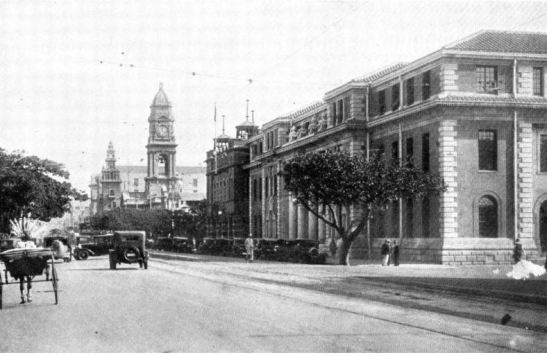
1968, Public Toilets on the corner of West Street and Gardiner Street.
(above) Corner of West and Aliwal Street, showing the old Waverley Hotel, 1970’s.
(above) An aerial view of Smith and West Street.
(above) The long view down West Street, from Indian Ocean to Berea.

(above and below) The Standard Bank, West Street. 1950’s and 1960’s

BUILDINGS IN WEST STREET
(above) An early view of a typical residence in West Street, Durban, 1858.
(above and below) An early photograph of Koch and Co marked with a penned X and Harvey Greenacre and Co. to its left, West Street, Durban 1880.
(below) Photograph of the slightly expanded Harvey Greenacre and Co building. 1890’s.

(above) Photograph of Ward and Salmonds and the fine Gothic-styled establishment of Harvey Greenacre and Co. West Street. 1920’s
(below) A sketch of Harvey Greenacre and Co.



(above) Main Police Station, West Street, Durban.
(above and Below) Reed and Champions Corner (Chemist and Druggist) Kenilworth Building, West Street,
(above and below). The 4th Methodist Church and the Standard Bank, West Street, Durban, (1903 above). This building was demolished in the 1970’s to make way for the modern city. The congregation moved to a new building on the corner of Smith and Aliwal Street.
(above and 2 images below) St. Joseph’s Roman Catholic Church, West Street, Durban, 1903. Demolished at the turn of the century and the property sold to developers, the proceeds were used to build the present Emmanuel Cathedral.

(above) Sketch of Harvey Greenacres Store, West Street, Durban.
(above) Durban’s first bank, Natal Bank, 1854, corner of West and Gardiner Streets.
(above) c1868. Offices of the Natal Mercury’s 3rd home, corner of West Street and Mercury Lane. Lower floor, Adam’s Bookshop estab 1865.
(above) London Chambers, West Street, Durban.
(above) Ward and Salmonds Outfitters, West Street, Durban (London Chambers Building). Gutted by fire in the early 1950’s.
(above and below) Baumann Bakery, corner of 120 West Street and Brickhill Road, Durban. The interpreneurial success of this enterprise is evident in the lower image from 1895 in that the proprietors have built a second storey above the older, and have embellished the building with three gables, a wrap-around verandah and a cooling turret.
(above) Tattersalls Bar, corner of West and Grey Street, Durban, 1911.
(above) The ABC Building, West Street, Durban.
(above) The ABC Building, West Street.
(above) Bank of Africa and Cuthbert’s Buildings, West Street, Durban.
(above) The Cuthbert’s Building, West Street.
(above and below) Natal Bank, corner of Gardiner and West Street, Durban. The first Natal Bank (oldest bank in Durban) was built in Aliwal Street. It later moved to this location.
(above) Town Hall, West Street, viewed from the Town Gardens. In 1910 a new City Hall was built and the old Town Hall became the Durban Post Office.
(above) A view of the City Hall, post 1910. West Street, Durban.
(above) City Hall, West Street. Viewed from Medwood Gardens.
(above) West Street, Durban, 1909, looking towards the Town Hall, showing Adams and Co. (Stationery and Book Seller) and Lennon Limited (Wholesale and Retail Chemist) on the left of the image. Adams & Co was established in 1865
(above) Shaves Store, sellers of Paint and Glass, 412 West Street, Durban. This business still exists.
(above) The Durban Baths, West Street, Durban, 1911.
(above) The Atlantic Building, Corner of Grey Street (Broad) and West Street, Durban.
(above) Tower Buildings, c1885, at the West Street Bridge, Durban.

(above) The Ivanhoe Hotel, West Street.

(above) The House where Fernando Pessoa lived, West Street, Durban.

(above) The West Street Mosque, upper end of West Street.
12 comments on “West Street – Durban – A Pictorial History”
Leave a comment Cancel reply
Information
This entry was posted on June 13, 2015 by grahamlesliemccallum in Durban Architecture, Durban Environment and Issues, Durban History, History, Natal History and tagged 1st Anglo-Boer War, A. K. Murray, ABC Building, Adams & Co., Aliwal Street, Art Deco, Atlantic Building, B. G. Lennon, Baumann Bakery, Berea, Berea Ridge, Blue Jackets, Broad Street, Caney's Jewellers, Captain Smith, Cartter, Central Hotel, City Hall, Cleghorn & Harris, Clement Francis Davis, Colonial Mutual Life Assurance, Cowey, Cuthbert's, Cuthbert's & Sloan, Drill Hall, Durban, Durban Borough Tramways, Durban Light Infantry, Durban Railway Station, Durban Volunteers, Electric Tram, Emmanuel Cathedral, Entabeni Hospital, Farewell Square, Ferguson & Co., Field Street, Florida Road, Frank Stevens, Gardniner Street, Georges Chapart, Great War Memorial, Grey Street, Harvey Greenacres, Henochsberg, Holwell & Co., Jackson Brothers, James Archbell, John Percy Hess, Kenilworth Building, Koch & Co, Lennon Limited, Lieutenant-Governor Pine, London Chambers, London Restaurant, Main Police Action, Market Square, Medwood Gardens, Methodist Church, Natal, Natal Bank, Natal Mercury, Naval Brigade, Old Law Court, Overholt, Point, Post Office, Public Baths, Public Works Building, Queen Victoria, Ramsay Collins, Reed and Champions, Ricksha, Shave's, Sir Martin West, Son & Co., St. Joseph's Roman Catholic Church, Standard Bank, Stuttafords, T. Alcock & Co., Tattersall's Bar, Tower Buildings, Town Gardens, Town Hall, Tram, Ward & Salmonds, Waverley Hotel, West Street, West Street Bridge, West Street Railway Crossing, Youlden.Shortlink
https://wp.me/p3WzEy-1aZRecent Posts
Recent Comments
| Noman King on DURBAN’S HISTORIC RAILWA… | |
| Jessica on THE BARQUE ANNABELLA and the A… | |
| roweam on DURBAN’S HISTORIC RAILWA… | |
| Roy on DURBAN’S HISTORIC RAILWA… | |
| Peter Dickens on SADF – Military Service… |
Archives
Categories
- 1984 Intake
- 3 SAI
- 3SAI
- Anglo-Boer War
- Art Deco
- Cape-wagon
- Design
- Doodling
- Durban Architecture
- Durban Environment and Issues
- Durban History
- Fort Amiel
- Genealogy
- History
- Kimberley
- Manor Gardens
- McCallum Genealogy
- Mortar Platoon
- My Books
- My Military Service in drawings and paintings – 3SAI
- My Military Service in drawings and paintings – 3SAI, O Coy, Mortar Platoon, 1984 Intake, SADF
- Natal History
- Newcastle
- O Coy
- ox-wagon
- Painting and Drawing – Graham Leslie McCallum
- SADF
- The Saluki Hound
- Uncategorized
- Vinedresser German Settlers
- World War 1
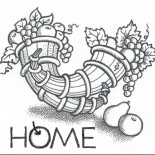


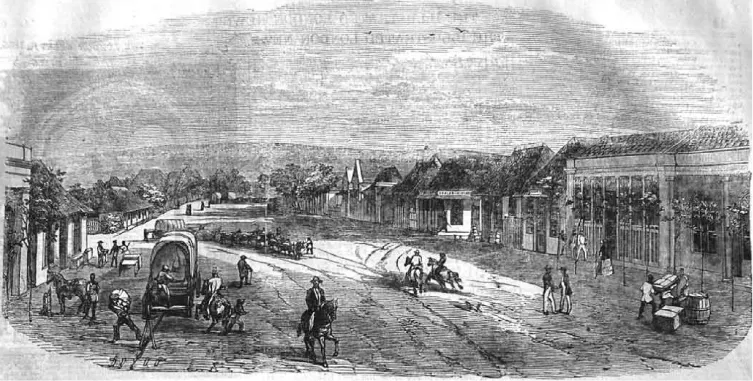


















































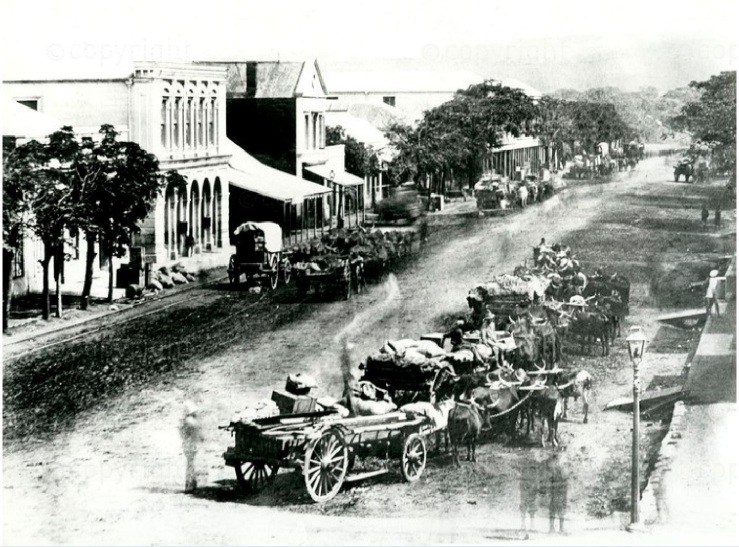


















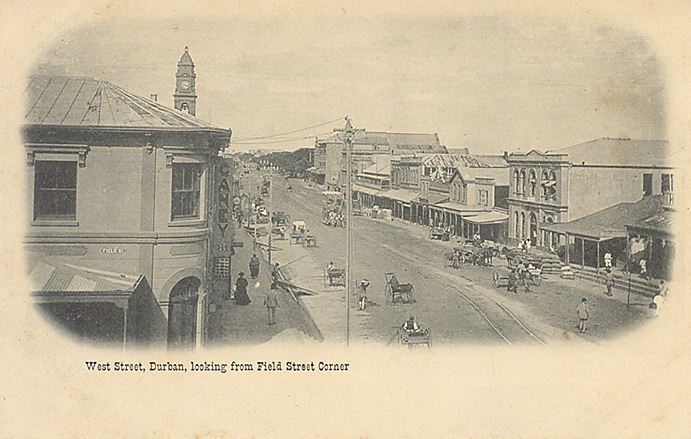







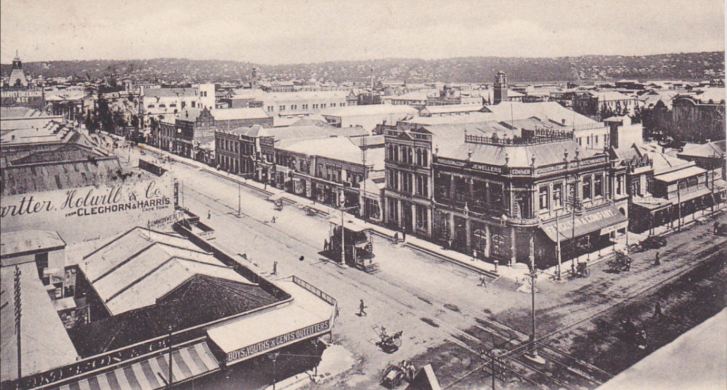








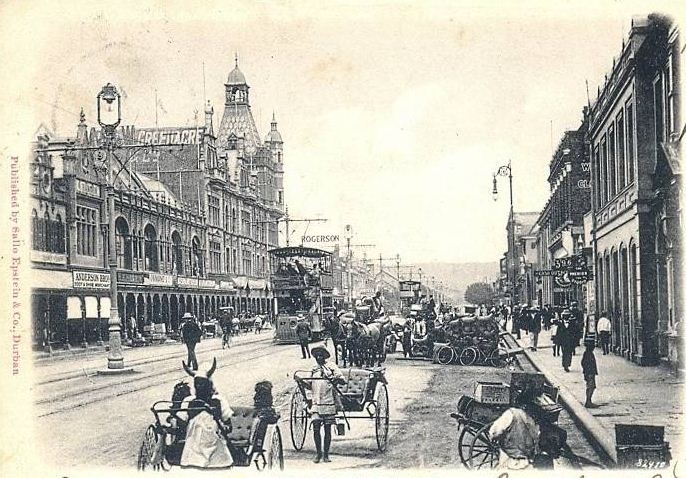







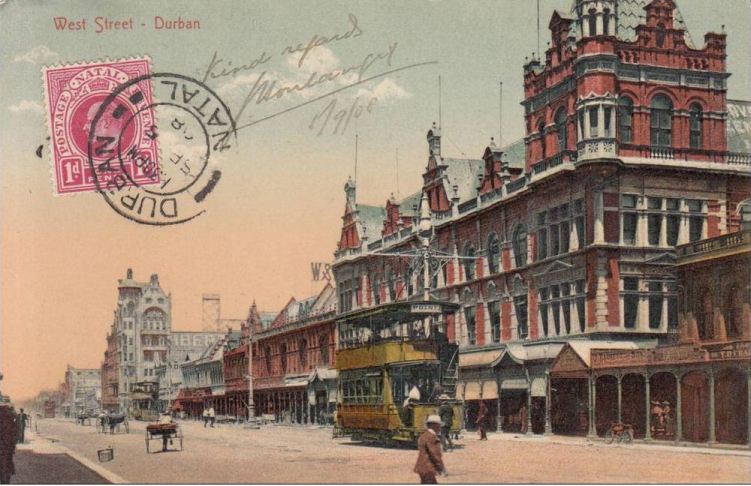











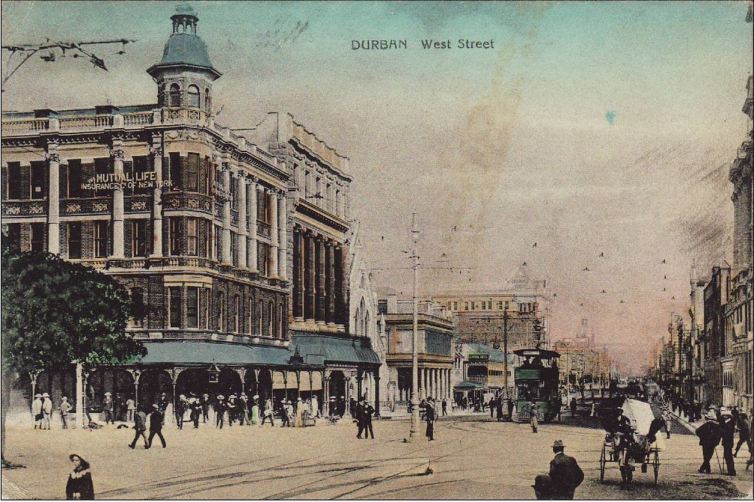

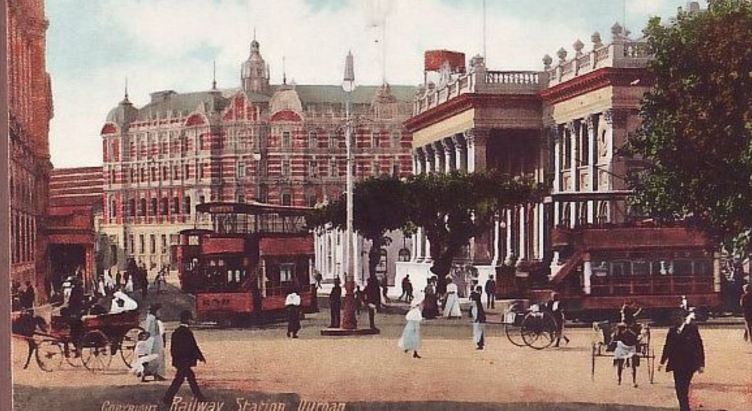

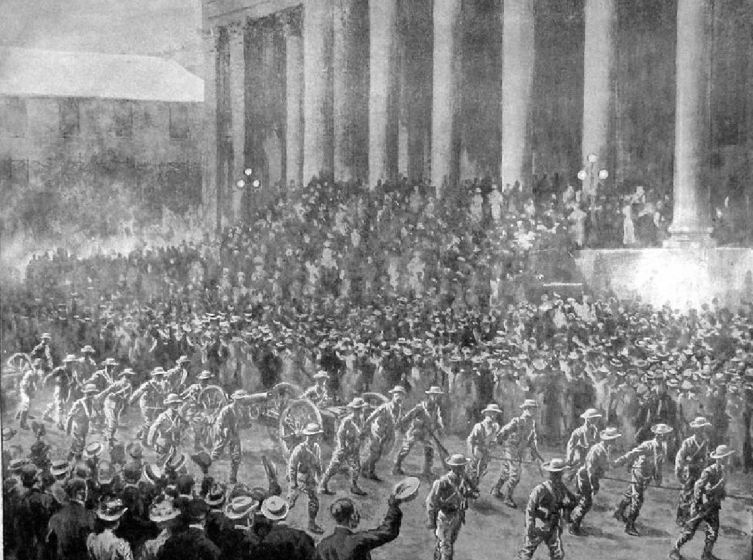





























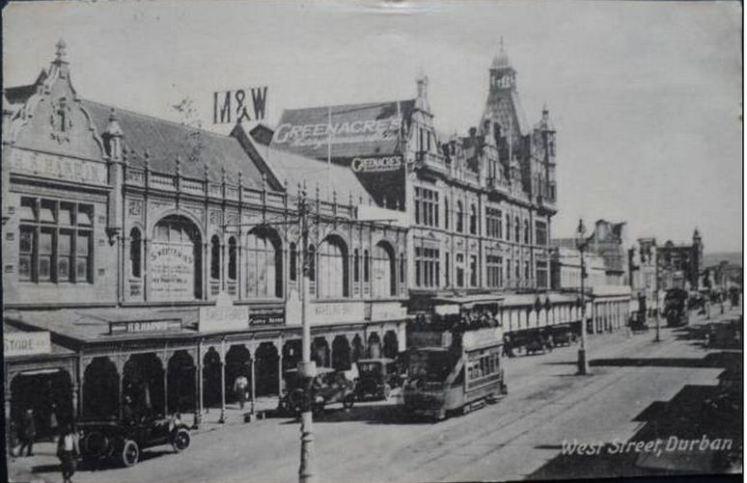























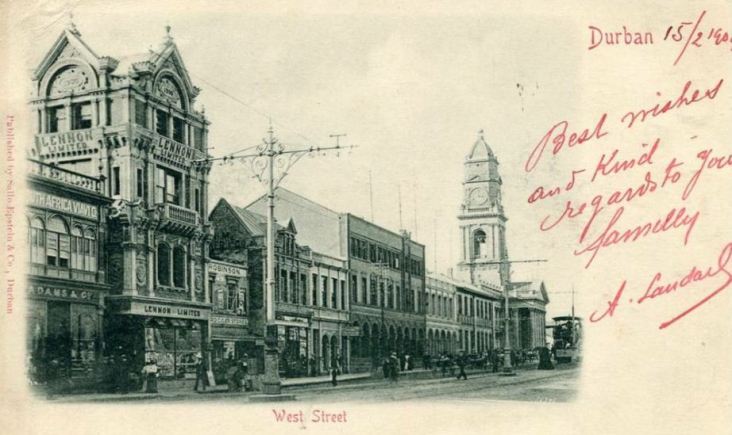





An excellent record thank you. Born in Durban 1945, DPHS, DHS, Natal Uni. Architect, Partner Olaf Pretorius Peckham Smith and Butland responsible for Southern Building Society, Durban Bay House and Ashley House (Smith Street) plus Sanlam Centre on old Central Hotel site in West Street plus others in and around Durban. Now retired, living in Cheltenham, England. Please send me more articles.
Fascinating article. I live in Umbilo, a suburb of Durban. It’s amazing to see the changes over the years. Thank you for going to all the trouble of compiling these photos.
Thank you! I grew up in Manor Gardens in the 1950s and find it all so interesting. What a beautiful city Durban was.
I also lived in Manor Garden
Thank you so much for supplying all those wonderful pictures. I was born in 1942 and loved living in Durban. I have such lovely memories of spending my whole childhood there
I immigrated to the USA in 1990. Thank you again for taking the trouble to compile those wonderful memories for us. Sincerely Christine Cox
Excellent compilation. Must have taken some doing.
Thank you for an excellent pictorial of West Street of those early days.
I grew up in Durban in the 1950’s. Of particular interest was the store Ward & Salmons (correct spelling). This was my great Grandfathers store Joseph Walter Salmons – who was born in Newport Pagnell, UK. His grandfather founded Salmons & Sons. Joseph Salmons also had stores in Johannesburg & Germiston.
Wonderful way to bring history to life. My dream as a little girl was to live ‘by the sea’, now many decades later I do! I thank the lord every day for this privilege. Much has changed however the beauty will never. Thank you for preserving our history.
A brilliant pictorial composition. Would love to buy it as a ” coffee table book”
As a member of a sporting family whose early members lived in West Str. in the early 1900’s , later to become custodians of Kingsmead from Old Fort Rd. where I lived for a short while walking to and from Mansfield Jnr, I was glued to these magnificent pages of old Durban. Well done and thank you for this contribution.
Fantastic compilation of West Street heritage. What a shame that many of the original iconic architectural structures were not protected and preserved.
Hi Leslie, I really enjoyed your pictorial history of Durban. Would you have something like this for Pietermaritzburg?
Kind regards
Liesel
Thank you for a fascinating, comprehensive pictorial history of West St. What a pleasant time I’ve spent here! I was hoping to spot a building housing the clockmaker R. Wilcock who had premises in West Street at least predating WW1.
Did you perhaps come across the same in your research?
Thanks so much!
Grant